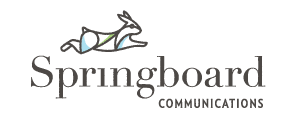5 Best Practices in School Brochures
Boost Your School’s Brand Image
As the number of school options available to families continues to increase, it’s in every school leader’s best interests to clearly communicate what makes your school stand out. Here’s why:
- In an environment of school choice and competition, if you’re not talking to prospective families… someone else is. While your school won’t be the right fit for all families, be sure all families have the opportunity to consider accurate and robust information about your program.
- Families who understand clearly your school’s mission, academics and culture before choosing to enroll are more likely to embrace your goals. This contributes to more engagement among families, more cooperation with teachers and more success for students!
- Faculty and staff will also benefit from understanding what makes your school unique, giving them the opportunity to not only reinforce those attributes within your building but to share those points of interest with friends, family and community members—and extending your ability to interest new prospective families!
5 Best Practices in Brochure Content
1. Boost your best attributes
Your school brochure should be eye-catching and engaging, and that means leaving plenty of room for images such as your logo, photos and infographics. To strike the right balance between graphics and text, focus on promoting what makes your school unique.
2. Put tour information front-and-center
Your brochure should entice prospective families to want to learn more, and a school tour is the best way for them to do that. Make sure information about how to tour the school—even if it means setting an appointment with the front office—is highly visible.
3. Prioritize professional design
As families’ experience with school choice deepens, so does their marketing sophistication. As a result, the days of offering a trifold that’s been designed in Publisher and printed on your copy machine are quickly receding into the past. Engaging the services of a professional graphic designer and printer are more affordable than you may think. Working with a freelance designer will help keep costs down, and they often have relationships with smaller, more affordable print shops.
4. Invest in high-quality photography
For a few hundred dollars, you can hire a freelance photographer for a half-day photo shoot at your school. Work with the photographer to develop a “shot list,” but focus primarily on close-up photos of students and teachers engaged in learning and other school activities. A handful of appealing photos of your building will also be important. Generally speaking, avoid photos of large groups or wide-angle shots of your campus. Pro tip: use your new photos consistently throughout all of your communications tools!
5. Do you need to be bilingual?
Many schools are part of increasingly diverse communities, made up of families who may not read comfortably in English. Design your brochure so that both English and another widely spoken language can be incorporated equitably.
Click here for a great example brochure!
Bonus! Sample Brochure Content Outline
To ensure your school brochure gives prospective families enough information (but not too much!), consider these elements:
Must Have:
Tour information
General school description, including unique selling points
Testimonials from parents or students
Performance rating
Grades offered (including next year if phasing in)
Address, phone number, website
Nice to Have:
Awards and recognitions
School motto
Clubs and after-school programs
Special area of focus this year—curriculum, character-building, culture, etc.
Total number of students served this year
Average classroom size or student/teacher ratio, including paraprofessionals
Name, phone number and email for enrollment questions
Principal’s name, phone number and email
